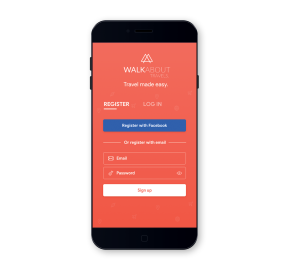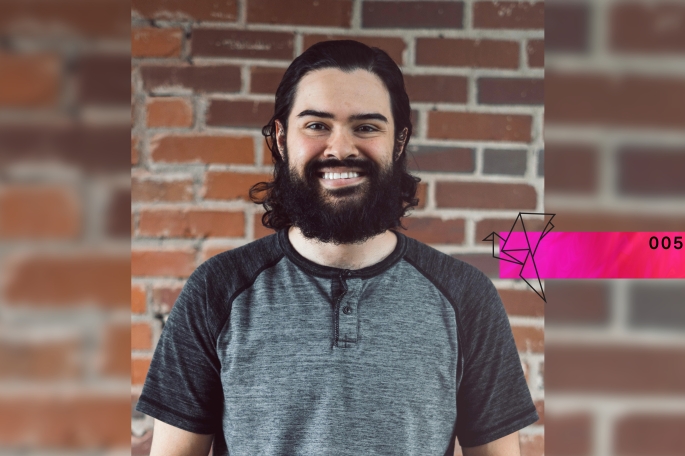Guilherme Atanes de Jesus came to the United States from Brazil, moved from a community college in Seattle to a Division I soccer school in South Carolina (had to deal with transfer credits) and graduated with a degree in psychology. He started off with a dream of becoming a professional soccer player and is now a user experience/user interface designer.
This is his story:
My dream was to be a professional soccer player.
There were a lot of challenges because of the goalkeeping position I played. I was pushing myself and trying to be the best that I could, because in Brazil, soccer is very big and pretty much 99% of the kids in Brazil dream to be a professional soccer players and help their families and stuff like that.
I grew up on the soccer field, playing every day. School was kind of like a secondary thing for me. I was always like pushing my schedule around soccer.
Once I reached a certain age in Brazil, I saw that soccer was going to be very hard for me to pursue. They said I was too small to be a goalkeeper, so I had to think about other options. Then, I dreamed to leave Brazil and go live in Sweden.
So I did a deal with my mom. If I could find a house or an apartment in Sweden, I could go. She said that because she thought I was never going to find something all the way from Brazil, especially with barley speaking English and no Swedish. But I had a friend who lived in there, and she found me apartment.
When I got the paperwork and showed it to my mom, she was like, “oh my God, you’re actually serious about that.” When I told her yes, she suggested I go to the United States, because it would be closer and there were known companies for helping people get settled.
I came to America, because my mom was afraid that I would get kidnapped in Sweden or something.
So that was definitely a deviation from the path I wanted, but it still helped me in my career for sure.
I was in Seattle playing soccer at a community college, Peninsula College, for the first two years of my university life. Then, Winthrop University saw me after my second year of college and asked me to transfer to play for them.

When I was still in Brazil, I started to play around with some design work. I was doing small brand stuff like logos, prints, business cards and stuff like that. Back in the day, we didn’t have Adobe. I was pretty much just using stuff like paint.
So I had that design background, and then when I moved to United States, I started learning about the more user-centered design. For example, creating applications and websites based on user needs and user research.
When I transferred to Winthrop, I wanted to do a marketing degree. I thought it aligned with the path of designing websites and applications, because of the user research part of it, but then I didn’t get into the marking program because of my transfer credits. Unfortunately, not all of them transferred.
So, I ended up with a psychology major and degree and it was actually really helpful. It was like accidental help for my career, because then I really focused on the research part of psychology, like understanding people, feelings and behaviors. That really made my passion for user experience design grow, just because I could better understand how people interact with certain stuff and how feelings can affect the rate of the interaction. I transfer that into what I do today.
In the last semester at Winthrop, I had my first real work experience. I was working with this company down in Charleston on applications. It’s called Lunch Peers It’s an application development agency that helps startups.

I started working with five to 10 different startups creating the applications. I was doing design, workflow, wire framing and branding. At this point, I was actually really doing what I wanted to do.
Being in a creative field, you always have doubts. You never know if what you doing actually is going to help. When you develop applications, you’re developing them to help better people’s everyday life. So, you know, you always have that doubt that it might not help.
When I started, they gave me a big responsibility, so I was excited, but definitely scared of like messing up and not getting users to download the app because it would not be friendly enough.
My two biggest focuses of inspiration would be Elon Musk, just because what he does with SpaceX and Tesla. The design aspect of Tesla is amazing- beautiful and user-friendly.
The other focus of inspiration would be Steven Jobs, because the way that he revolutionized Apple. I mean, he pretty much started my industry. When he came up with the first iPhone, that’s when really we found out about app design and user experience and stuff like that.
Gui’s Advice:
Just do it.
Never stop pursuing what you what your goals are. I mean you definitely will have diversions on your path to get to where you want, and maybe one of those diversions, like mine, will be good for you. They show you different pathways that you never expected.
Also, don’t be afraid to try new things even though it’s very scary. You don’t know what is on the other side until you actually do it.








